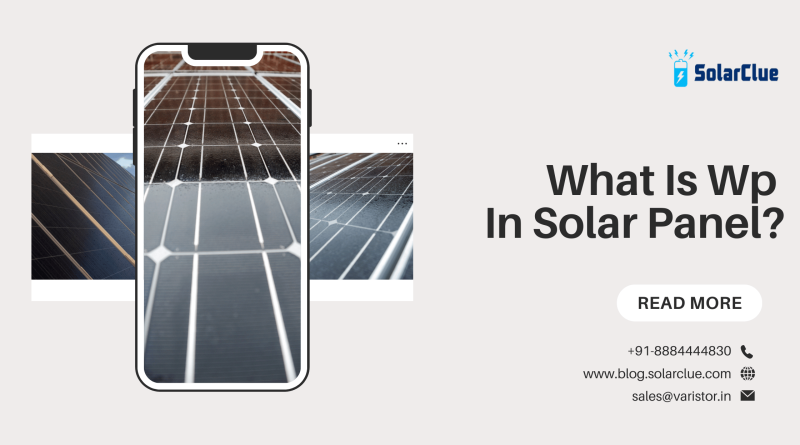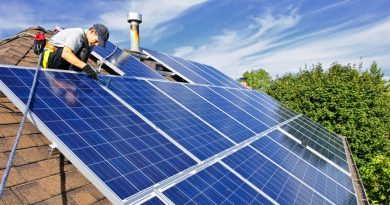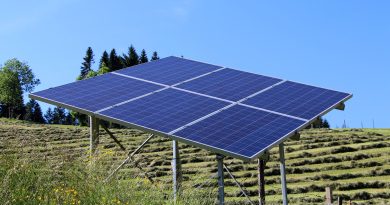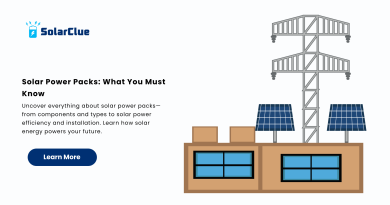What Is Wp In Solar Panel?
Solar energy is becoming increasingly popular as a renewable energy source, with solar panels being a critical component of this technology. Understanding the specifications of solar panels is essential for optimizing their performance. One such specification is Watt-Peak (Wp). This blog delves into the concept of Wp, its significance, and how it relates to other solar panel specifications like efficiency and voltage.
Table of Contents
What is Watt-Peak (Wp)?
Watt-Peak (Wp) is a measure of the maximum power output a solar panel can produce under standard test conditions (STC). These conditions include a solar irradiance of 1000 watts per square meter, a cell temperature of 25°C, and an air mass of 1.5. Wp provides a standardized way to compare the power output of different solar panels, regardless of their size or technology.
Significance of Wp in Solar Panel Performance
The Wp rating is crucial in determining the potential energy output of a solar panel. A higher Wp indicates a greater power generation capability. However, Wp alone does not determine overall performance; it must be considered alongside other factors such as efficiency and environmental conditions.
Wp and Solar Panel Efficiency
Efficiency is the ratio of the electrical power output to the solar power input, expressed as a percentage. A more efficient panel will convert a higher percentage of sunlight into electricity. Efficiency is closely linked to Wp, as panels with the same surface area but different efficiencies will have different Wp ratings. To calculate the efficiency of a solar panel, you can use the formula:

Wp and Voltage
Voltage is another critical parameter related to Wp. The voltage at which a solar panel operates to produce its peak power is known as the maximum power voltage (Vmp). The relationship between Wp and voltage helps in designing the electrical system to ensure optimal performance.
Comparing Wp of Different Solar Panel Types
Different types of solar panels have varying Wp ratings due to differences in their manufacturing technologies and materials. Here’s a comparison table:
| Solar Panel Type | Typical Wp Range | Efficiency Range |
|---|---|---|
| Monocrystalline | 300-400 Wp | 15-20% |
| Polycrystalline | 250-350 Wp | 13-16% |
| Thin-Film | 100-250 Wp | 10-12% |
How to Choose the Right Wp for Your Needs
Selecting the appropriate Wp for your solar panel system depends on various factors, including energy consumption, available space, and budget. It’s essential to match the Wp to your energy requirements to ensure efficient and cost-effective energy production.
Wp and Solar Panel Sizing
Accurate sizing of solar panels is vital to meet energy needs without overspending. When designing a solar system, consider the total Wp required to achieve the desired energy output.
Wp in Solar System Design
Incorporating Wp into solar system design involves calculating the total Wp needed to power the entire system. This includes considering factors like shading, orientation, and geographic location.
Real-World Applications of Wp
Wp plays a significant role in both residential and commercial solar installations. For instance, a typical home might require a 5 kWp system to cover its energy needs, while a commercial building may need a much larger system. Real-world examples help illustrate the practical application of Wp in various scenarios.
Common Misconceptions About Wp
Several misconceptions surround Wp and its role in solar panel performance. One common myth is that a higher Wp always means better performance. However, it’s essential to consider other factors like efficiency and environmental conditions to get a complete picture.
Conclusion
Understanding Wp is crucial for optimizing solar panel performance and making informed decisions about solar energy systems. By considering Wp alongside other specifications like efficiency and voltage, you can ensure a more efficient and effective solar energy solution.
Here at SolarClue®, we offer a smart, practical, and “beautiful” solution. You will be answered for all the questions related to Solar.
We provide all kinds of brands that are the Best Solar panels in India.
If you are the one who is planning for the solar power system. Don’t hesitate to contact our team!
Looking forward to empowering you with solar energy, just like hundreds of our other clients!
FAQs
1. What is Watt-Peak (Wp) in solar panels?
Watt-Peak (Wp) is the maximum power output a solar panel can produce under standard test conditions.
2. How is Wp different from efficiency?
Wp measures peak power output, while efficiency indicates how effectively a panel converts sunlight into electricity.
3. Why is Wp important in solar panel performance?
Wp helps determine the potential energy output of a solar panel, aiding in the comparison and selection process.
4. How do I choose the right Wp for my solar panel system?
Consider factors like energy consumption, available space, and budget to select the appropriate Wp.
5. Can a higher Wp rating improve my solar panel’s performance?
A higher Wp can indicate better performance, but it should be considered alongside efficiency and environmental factors.




